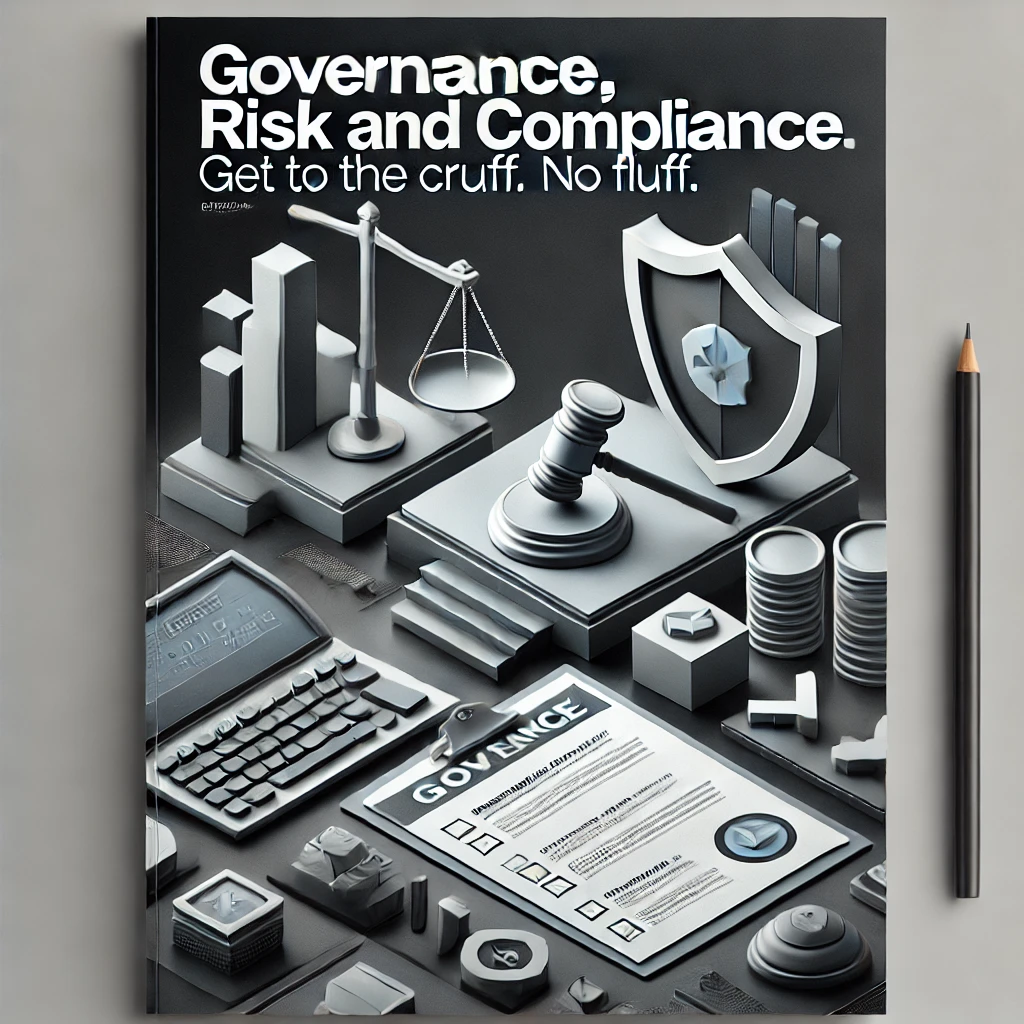Governance, Risk and Compliance (Get to the Crux. No Fluff.)
 Tanishka Marrott
Tanishka Marrott
A lot of people treat security as if it's a separate entity altogether —
That's where they miss the mark...
The Security Strategy ∝ The Corporate Strategy
Let's get to the crux - real-quick. 💡
—
Q: What's governance?
Overseeing -> Directing + controlling the business
- Making sure the business is accomplishing what it's meant to.
- Maximising on *long-term value*
- While still being cognizant of the stakeholder's interests.
Sounds good.
—
Q: Security governance?
Aligning security practices with the overall biz objectives
- A framework — That's clearly defined & well-integrated into the broader governance structure
- Integrating risk management & compliance straight into core BizOps.
Okay, so we're essentially making security a core-component of the "decision-making" process.
Clear? Let's proceed
—
Q: Risk Management - In a nutshell
All around -
Analysing
- Assessing potential sources of risk + recognising potential gaps (Where the loose ends actually are?) + the assets that're critical and could be targetted
- Assessing
The Risk Level = What's the probability of this risk? The impact should it materialise?-* Solutionize
i. Mitigate the risk
Have some security safeguards in place to reduce the likelihood or the impact of risks. Firewalls, Encryption, MFA, Access Control.
So on and so forth.
ii. Accept the risk
If the cost of mitigation outweighs the impact, it makes more sense to accept the risk.
This decision should be well-documented & must be aligned with the org's risk appetite
iii. Shift some of the risk to a third party:-
Outsource functions to a specialized provider, who can better manage the risk
iv. Avoid it altogether:-
Don't enter the *high-risk* market. Simple.
Crux :-
Maintaining business continuity even in face of threats.
—
Q - Compliance
Compliance = Legal. Audits. Regulations.
i. External Compliance:-
- Something we're to comply with.
Standards that've been established by some external governing bodies/ regulatory agencies.
- *Non-negotiable*
- Needs to be complied with — if operating within that industry / region
- Purpose - Protect consumers, ensure fair practices & maintain industry standards.
- GDPR, PCI - DSS & HIPAA. To name a few.
ii. Internal Compliance:-
- Typically developed by the leadership for ops to align with the org's strategic goals, *risk-appetite* & company's values
- Internal policies, procedures & governance frameworks
- What all does it comprise?
A. InfoSec Policies
Who has access to the data, how is it being protected, how is data beig handled in the org?
B. Access Control Policies
Reviewing + Granting + Monitoring & Auditing access
Right folks should have the right access 👍
C. Incident Response Plans
Remember CIR :- Protocols for responding to security breaches , having plans in place for Containment, Investigation and Recovery — CIR (Acryonym)
—
Q: Making things crystal-clear. Let's cut the jargon.
Both are essential for a well-rounded security strategy. Let's take an example.
Example -
BigCorp may have a policy that goes *beyond* what GDPR deems as the minimum requirements for protecting personal data within the EU.
It may involve stricter data access controls, more frequent security audits.
While this may not be legally required, it's a part of the org's internal governance frameworks.
To mitigate risk, plus enhance on the security posture.
Intent: Fostering a security culture from within.
—
Q: Audit? Or a "cloud audit" rather?
Audit
- Assessment of a CSP's infrastructure, processes & controls
- Goal is to evaluate if the cloud services are secure, reliable & compliant with relevant regulations & best practices
—
Key Pointers in an auditor's back-pocket:
- Are the cloud services compliant with regulatory regulations - GDPR, HIPAA,
& with industry standards - ISO 27001 ?
- How is the data stored, processed & managed in the cloud (BCDR included)?
- What security controls does the provider have in place to ensure the data is protected (Encryption, Access Control, IR plans)?
- Does the CSP adhere to uptime, availability SLAs / support commitments?
- Potential risks in the cloud and if the csp has the capability to mitigate them?
—
Two frameworks you should be aware of:-
ISO 27001:- More around *creating a comprehensive ISMS* — Information Security Management System, to safeguard assets
Plus, aligning the security strategy with the business.
ISO 27002:- Detailed list of terms, technologies, security controls and best practices *to support the implementation of the ISMS*
—
Key takeaways:-
Security is integral to your business strategy. External compliance ensures you meet industry standards, while internal compliance aligns with your values and goals.
A strong security strategy embeds risk management and compliance into every decision, protecting assets and supporting growth.
Frameworks like ISO 27001 and ISO 27002 lay the foundation for effective security practices. Regular audits confirm your cloud services are secure and compliant.
Security is key to long-term success.
--
Feel free to connect with me on LinkedIn —I’d love to stay in touch and explore opportunities to collaborate!
Subscribe to my newsletter
Read articles from Tanishka Marrott directly inside your inbox. Subscribe to the newsletter, and don't miss out.
Written by

Tanishka Marrott
Tanishka Marrott
I'm a results-oriented cloud architect passionate about designing resilient cloud solutions. I specialize in building scalable architectures that meet business needs and are agile. With a strong focus on scalability, performance, and security, I ensure solutions are adaptable. My DevSecOps foundation allows me to embed security into CI/CD pipelines, optimizing deployments for security and efficiency. At Quantiphi, I led security initiatives, boosting compliance from 65% to 90%. Expertise in data engineering, system design, serverless solutions, and real-time data analytics drives my enthusiasm for transforming ideas into impactful solutions. I'm dedicated to refining cloud infrastructures and continuously improving designs. If our goals align, feel free to message me. I'd be happy to connect!